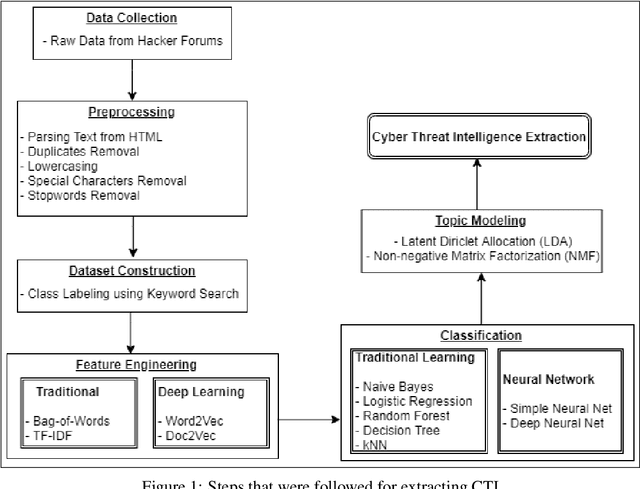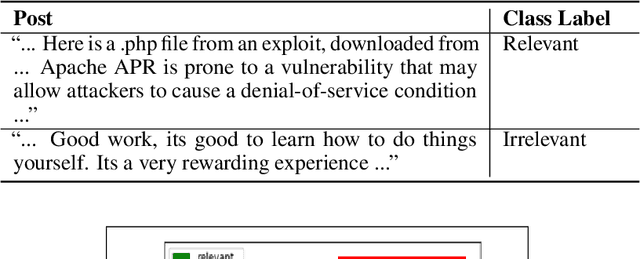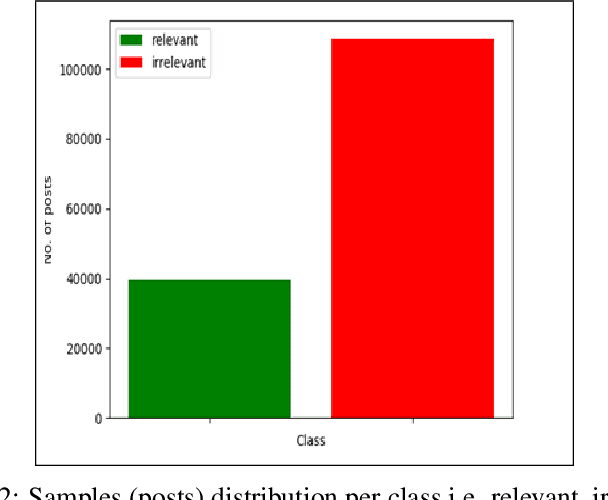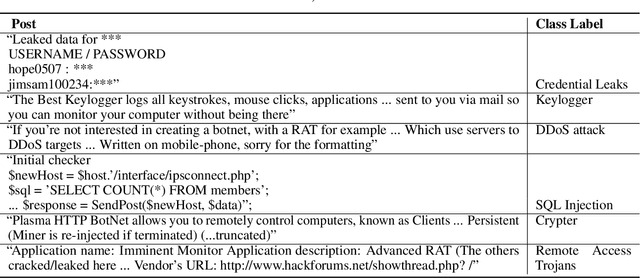Farzana Anowar
Adaptive Learning for Service Monitoring Data
Aug 25, 2022



Abstract:Service monitoring applications continuously produce data to monitor their availability. Hence, it is critical to classify incoming data in real-time and accurately. For this purpose, our study develops an adaptive classification approach using Learn++ that can handle evolving data distributions. This approach sequentially predicts and updates the monitoring model with new data, gradually forgets past knowledge and identifies sudden concept drift. We employ consecutive data chunks obtained from an industrial application to evaluate the performance of the predictors incrementally.
Generating Cyber Threat Intelligence to Discover Potential Security Threats Using Classification and Topic Modeling
Aug 19, 2021



Abstract:Due to the variety of cyber-attacks or threats, the cybersecurity community enhances the traditional security control mechanisms to an advanced level so that automated tools can encounter potential security threats. Very recently, Cyber Threat Intelligence (CTI) has been presented as one of the proactive and robust mechanisms because of its automated cybersecurity threat prediction. Generally, CTI collects and analyses data from various sources e.g., online security forums, social media where cyber enthusiasts, analysts, even cybercriminals discuss cyber or computer security-related topics and discovers potential threats based on the analysis. As the manual analysis of every such discussion (posts on online platforms) is time-consuming, inefficient, and susceptible to errors, CTI as an automated tool can perform uniquely to detect cyber threats. In this paper, we identify and explore relevant CTI from hacker forums utilizing different supervised (classification) and unsupervised learning (topic modeling) techniques. To this end, we collect data from a real hacker forum and constructed two datasets: a binary dataset and a multi-class dataset. We then apply several classifiers along with deep neural network-based classifiers and use them on the datasets to compare their performances. We also employ the classifiers on a labeled leaked dataset as our ground truth. We further explore the datasets using unsupervised techniques. For this purpose, we leverage two topic modeling algorithms namely Latent Dirichlet Allocation (LDA) and Non-negative Matrix Factorization (NMF).
 Add to Chrome
Add to Chrome Add to Firefox
Add to Firefox Add to Edge
Add to Edge